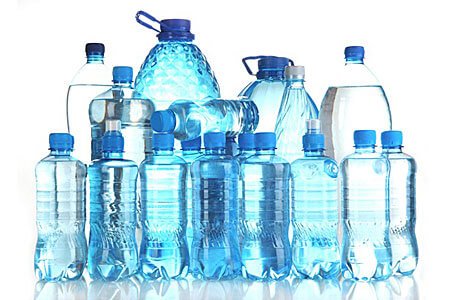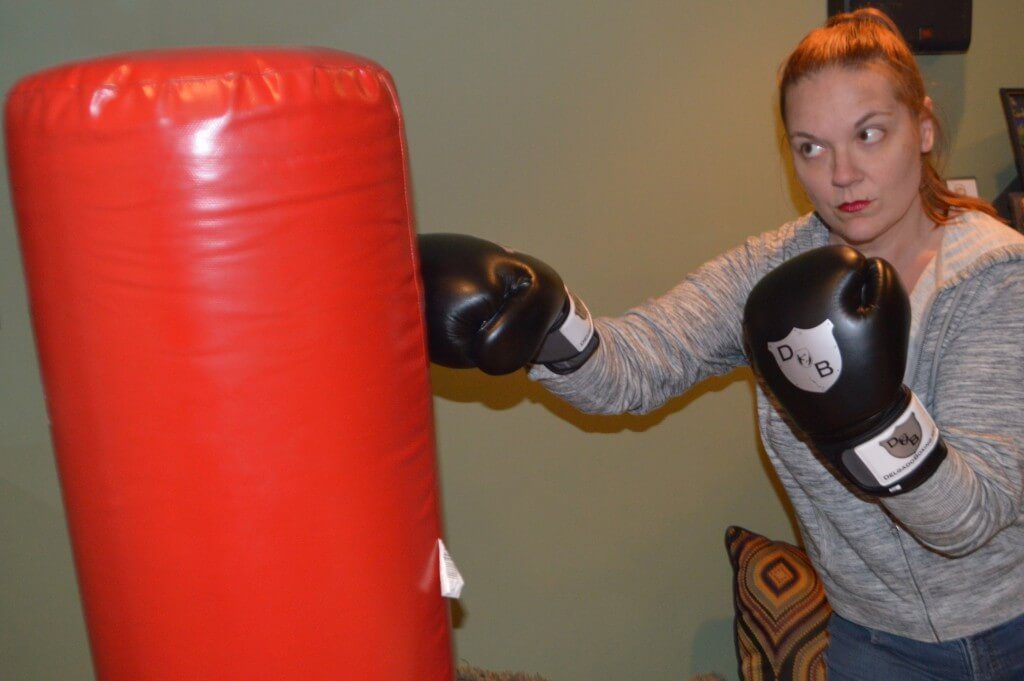Nutrition Q&A: Smart Plastics

I’m trying to be good and stay hydrated this summer and, out of convenience, I’ve been grabbing a water bottle out of the fridge on my way out the door and refilling it all day. I know that I should be avoiding BPA, but can you tell me which recycling codes on the bottom of my bottles I need to avoid? BPA stands for Bisphenol A, an industrial chemical used to make polycarbonate plastic resins, epoxy resins, and other products. It is an organic compound that possibly acts similarly to estrogen when ingested into the body. A growing number of health experts and consumers are becoming concerned about the adverse health effects that can be caused from high-dose or long-term exposure to BPA. BPA has been used to harden plastics for more than 40 years. It’s in more things that most people think. We all know that it can be in the lining of canned foods and water bottles, but BPA can also be found in medical devices, compact discs, and even dental sealants. More than 90% of us have BPA in our bodies, coming mostly from eating foods or drinking beverages that have been in containers made with BPA. To decrease your exposure to BPA follow these Tips to help you avoid BPA in plastics: Find products that are BPA-free. It isn’t as hard as it once was. Choose non-plastic containers for food. Containers made of glass, porcelain, or stainless steel do not contain BPA. Do not heat plastic that could contain BPA. Never use plastic in the microwave. Heat can cause BPA to leach out. For the same reason, never pour boiling water into a plastic containers. Hand-wash plastic bottles, cups, and plates. Throw out any plastic products — that are chipped or cracked. They can harbor germs. If they also have BPA, it’s more likely to leach into food. Use fewer canned foods and more fresh or frozen. Many canned foods still contain BPA in the can linings. Avoid plastics with a 3, 6, or 7 recycle code on the bottom. These plastics might contain BPA. Safe codes are 1,2,4 and 5.
Patient Perspective: Cara Inman

Patient Perspective: Cara Inman When I was diagnosed with breast cancer, I was scared and in shock. I was so lucky to be surrounded with a dream team of doctors – breast surgeon, plastic surgeon, and oncologist – who were fabulous. My role with them was to be the most compliant patient possible while they took care of business. The next step was physical therapy and this was my opportunity to take an active role. I knew physical therapy would be critical to putting my world back together again. My doctors told me about TurningPoint and I booked my first appointment from my hospital room. It’s hard to express how important this partnership has been. At my first appointment, my therapist was confident and reassuring. Since they only deal with breast cancer patients, they were just the experts I needed! I had a team of two therapists and the level of care was exceptional. It was amazing how quickly my body responded to my therapy sessions. They also gave me just the right exercises to do at home and I saw improvement daily. Since TurningPoint specializes in helping breast cancer patients, it was very assuring at each visit to know that they knew exactly what I was going through and better yet, how to get me through the last step of healing and recovery. I feel that my physical therapists have truly become coaches for me – giving me guidance and cheering me on. My experience at TurningPoint has been wonderful. I will forever be grateful to this wonderful group of professionals!
Patient Perspective: Carole Ann Webb

Patient Perspective: Carole Ann Webb April 15, 2015. The fact that it was tax day was far from the worst thing about this afternoon. “You have early stage breast cancer.” This news was certainly not what I expected to hear one week after my first ever mammogram. I had turned forty ten months before, and I had made a promise to myself to not turn forty-one before my initial screening. At first I was confused. Breast cancer didn’t run in my family. I was healthy, an active middle-aged (barely) woman who loved to go on long hikes and was just learning to mountain bike. Really? I had breast cancer? After more tests, it appeared that a lumpectomy and seven weeks of radiation were to be my summer. Before my surgery, I headed out to California for a two-week vacation, taking on tough hiking challenges in the state’s many national parks. I knew it would be awhile before I felt like hiking again. Two weeks after my surgery, I noticed that the painful swollen area under my left arm (where the sentinel node biopsy had been performed) persisted. I was diagnosed with a seroma, and during radiation, I noticed tightness and decreased range of motion in that left arm. I started physical therapy, but the feeling in my arm didn’t improve – in fact, it got worse. It was suggested that I see someone for a lymphedema assessment since my arm was definitely swollen, and I was continuing to experience pain. It was as simple as googling “breast cancer rehabilitation Atlanta.” If I wasn’t hooked by the inviting TurningPoint website (which I was), then my first appointment sealed the deal. What a welcoming place! My therapy team Jill, Anita and Jyoti educated me and developed a complete treatment plan, https://neurofitnessfoundation.org/ambien-zolpidem/. The staff and volunteers always had a smile and a kind word to offer. I will be forever grateful for the excellent care I received. I felt that TurningPoint treated the whole me – my body and spirit felt revitalized after each visit. My lymphedema is stable at a low level and I know how to manage it myself and when to go back for reassessment – and I no longer have pain! I wasn’t able to do most of the physical activities I enjoy for most of 2015. But 2016 is here, and I have taken up boxing! This new interest is going to get me in the best shape of my life, but I couldn’t have made it this far along in my journey without the care, wisdom, and genuine support I received from TurningPoint. I offer sincere thanks for making this chapter in my life so much easier to bear.
Nutrition Q&A: Grilling Meats

Is eating grilled meat safe? The American Institute for Cancer Research (ACIR) expert report says there is not enough evidence to show that grilled meat increases your risk of cancer. But we do know that cooking meat at high temperatures, like grilling, creates cancer-causing substances called polysyclic aromatic hydorcarbons (PAHs) and heterocyclic amines (HCAs). PAHs form when fat from the meat drips onto the hot coals or grill element. They’re then deposited on the food courtesy of flame-ups and rising smoke. Unfortunately, that desired charring that forms on meat can contain PAHs as well. HCAs, meanwhile, are produced when red meat, poultry and fish are exposed to high-heat cooking, like grilling, broiling, or charring. Both PAH and HCA can cause changes in DNA that may lead to cancer according to AICR. Risk of these carcinogenic formations is higher from red and processed meats – like hamburgers and hot dogs. Evidence is clear that diets high in red and processed meats, contribute to an increased risk of colorectal cancer. Based on the evidence, AICR recommends limiting red meat to 18 ounces of cooked meat per week and staying away from processed meats. Guide to Safe Grilling Marinate: Studies have suggested that marinating your meat before grilling can decrease the formation of HCAs. Scientists theorize that the antioxidants in these marinades block HCAs from forming. Pre Cook: If you are grilling larger cuts, you can reduce the time your meat is exposed to the flames by partially cooking it in a microwave, oven or stove first. Immediately place the partially cooked meat on the preheated grill. This helps keep your meat safe from bacteria and other food pathogens that can cause illness. Lean Cuts: Trimming the fat off your meat can reduce flare-ups and charring. Cook your meat in the center of the grill and make sure to flip frequently. Mix It Up: Cutting meat into smaller portions and mixing with veggies can help shorten cooking time. Go Green: Grilling vegetables and fruits produces no HCAs and plant-based foods are actually associated with lower cancer risk. Try this marinade recipe for any kind of meat. Tangy Yogurt-Spice Marinade (Yield: Makes about 1 2/3 cups.) 1.5 cups low-fat yogurt 2 Tbsp. fresh lemon juice 1/4 tsp. cayenne pepper 2 tsp. minced garlic cloves 2 tsp. ground coriander 1 tsp. ground turmeric 2 tsp. minced fresh ginger (or 1 tsp. dried, ground ginger) Salt and white pepper, to taste Place all ingredients in a blender and combine at low speed. Pour into large, wide and shallow non-metal casserole dish or mixing bowl. Add food to be grilled and turn to coat all sides. Cover and refrigerate at least 1 hour. When ready to grill, drain and discard marinade. Thread skewers with food. Grill, turning often to prevent charring. If desired, make additional marinade for basting (but do not baste with used marinade to avoid food poisoning from raw meat juices). Per serving: 23 calories, 0 g total fat (0 g saturated fat), 3 g carbohydrates, 1.5 g protein, 0 g dietary fiber, 22 mg sodium










